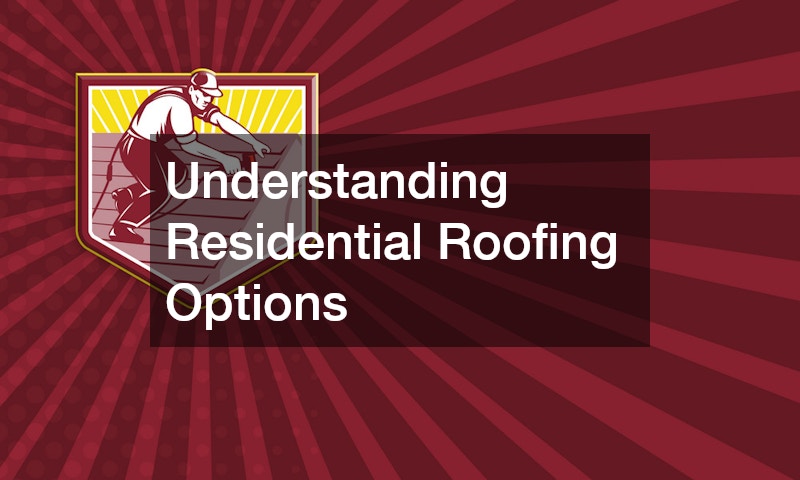Understanding your Homeowners Association (HOA) requirements for roof installations is crucial to ensure compliance and avoid unnecessary fines or complications. This article provides a comprehensive guide on the key considerations and common topics related to HOA roof installation compliance. Homeowners must be aware of the specific regulations and procedures that their HOA enforces to maintain harmony and uniformity within their communities. One of the first steps in complying with HOA roof installation rules is accessing your HOA’s specific guidelines. Homeowners can typically find these guidelines in the HOA’s governing documents, such as the Covenants, Conditions, and Restrictions (CC&Rs). It’s also beneficial to contact the HOA board directly or visit their website for the most current information. Being familiar with these guidelines ensures that you’re aware of the restrictions and expectations laid out by the HOA. It may also reveal details on the types and styles of roofing materials allowed. This proactive approach minimizes potential conflicts and misunderstandings down the line. Moreover, homeowners should keep a copy of these guidelines handy throughout the planning and approval process. This ensures that all specifications and restrictions are adhered to, and that any changes over time are immediately noted. Regular updates from the HOA might include changes to allowable materials or practices, requiring your attention to avoid inadvertent violations. After grasping the guidelines, homeowners should familiarize themselves with the approval process for roofing installations. This process typically includes submitting a proposal or application for review by the HOA board. Engaging with this process early can help streamline your project timeline and reduce delays. The proposal often requires detailed descriptions of the planned roofing work, including colors, materials, and timelines. Preparing comprehensive documentation helps in portraying the legitimacy and accuracy of your plans to the HOA. Recognizing common pitfalls in the submission process can help you avoid rejection or resubmission requests. When seeking HOA approval for roof work, preparing comprehensive documentation is the key to success. Documentation typically includes detailed plans, material samples, and timelines. Gathering these materials in advance saves time and ensures that your proposal is thoroughly considered by the HOA board. Ensure that all documents are precise and align with HOA guidelines to prevent unnecessary delays. Adequate preparation showcases diligence and respect for community standards, fostering a smoother approval process. Familiarizing yourself with specific document requirements from previous successful applications can streamline this process further. Additionally, having backup options ready can be useful in case the board requests changes. This demonstrates flexibility and a willingness to comply, both important for maintaining a positive relationship with the HOA. Consulting experienced contractors who have previously worked under HOA regulations can provide invaluable insights into crafting a successful application. Effective communication with your HOA is essential throughout the roof installation approval process. Establishing a clear and respectful line of communication can help preempt potential objections and streamline approvals. Being proactive in your communications also demonstrates a commitment to abiding by community rules. Regularly updating the HOA board about progress or changes in the proposed project is crucial. This openness helps in building trust and reduces the likelihood of surprise inspections or disputes. Open dialogues can also encourage feedback that improves your plans, aligning them more closely with HOA expectations. Should disputes arise with your HOA regarding roof installations, understanding your homeowner rights is crucial. Familiarize yourself with local laws and HOA governing documents, as they define the extent of your rights and obligations. Remaining well-informed prepares you to handle conflicts assertively and knowledgeably. In some cases, state or local regulations might supersede HOA rules, providing homeowners additional recourse. Being aware of these legal nuances can be empowering when negotiating with the HOA. It is beneficial to document all interactions and disputes meticulously as it creates a record that can be used in securing your rights. Homeowners should also seek clarification when in doubt about specific HOA policies or decisions. This involves asking questions during meetings and reviewing any amendments to rules or procedures. Understanding and asserting your rights can foster a fair resolution to disputes and maintain harmony within the community. Effective conflict resolution strategies can steer disputes towards an amicable outcome. Approaching disagreements with an open mindset and willingness to compromise can foster positive dialogue. This involves listening actively, acknowledging diverse perspectives, and finding mutually beneficial solutions. Involving a third-party mediator with experience in HOA matters can facilitate resolution when direct negotiations stall. Mediation provides an impartial ground where both parties can express their concerns and work towards agreement. Emphasizing the goals of community integrity and property value can also offer common ground for solutions. Navigating the complexities of HOA regulations for roof installations requires a thorough understanding and preparation. By accessing guidelines, seeking timely approvals, and effectively managing conflicts, homeowners can ensure compliance and maintain good standing with their HOA. Ultimately, prioritizing adherence to HOA’s rules benefits both the homeowner and the community, fostering a cooperative and appealing living environment. In summary, familiarizing yourself with HOA processes, respecting community standards, and robust communication are keys to successful roof installations. Being informed empowers homeowners to negotiate confidently and maintain construction projects within the framework of HOA expectations. By following these guidelines, you contribute to the collective harmony and aesthetic consistency of the community. Finally, the peaceful resolution of any emerging dispute cements the unity and shared vision within HOA communities. Understanding rights and responsibilities amid potential conflict ensures a balance between individual desires and community cohesion. The long-term benefits of harmonious living far outweigh the initial efforts involved in comprehensive compliance with HOA roof regulations.Understanding HOA Regulations on Roof Installations
Accessing Your HOA’s Guidelines
Deciphering Approval Processes
Steps to Seek HOA Approval for Roof Work
Preparing the Necessary Documentation
Communicating with Your HOA
Dealing with HOA Disputes Regarding Roof Installations
Understanding Your Rights
Conflict Resolution Strategies
.




